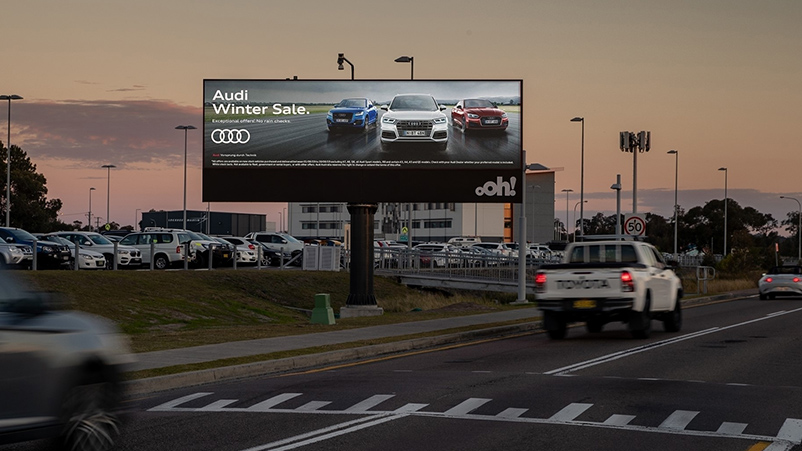How media - and marketers - can ignite ‘Smart Cities’ mega trend

Brands and companies talk a lot about purpose and community. Here’s a progressive, real-world blueprint that engages 8.8 million Australians, 14.5 million domestic flyers and half of our top 10 online shopping postcodes. Strangely, they’ve been largely invisible until now. Here’s why and what we can do.
“Struggling in the morning commute? Let’s build more freeways. Tired of flights being delayed? Another airport must be the answer. But in truth, we never address the underlying issue.”
How ‘Smart Cities’ really started 100 years ago
Just over one hundred years ago, American-Canadian author and activist, Jane Jacobs, led the charge for radical urban planning in New York City that still defines the iconic boroughs we know today. Jacobs stood tall against the encroaching modernism that threatened what she believed was the very lifeblood of the city: people and the way they moved in and through a space. Her advocacy ushered in an era of citizen-centric planning that has continued to influence the design of cities around the world. So, what then would Jacobs think of our obsession with creating Smart Cities?
While there is little doubt that technology and data-driven design are essential aspects of future-proofing our world, infrastructure divorced from the needs of the community is the antithesis of ‘Smart’. And when the development and implementation of digital devices is led by available technology rather than being problem-driven, we create a divide that threatens to leave a significant portion of our citizenry behind. With information gaps the death knell of inclusive and equitable technological development, asking questions and starting with the small stuff is often the best way forward.
“While expanding our definition of Smart Cities to include all Australians is not going to address all that ails the nation, there is no doubt it is a step in the right direction.”
How Perth’s Yagan Square is innovating for community with Australia’s largest screen
Perth’s Yagan Square Tower is the largest digital panel in Australia. Soaring at 45-metres above the bustling crowds, the circular panels feature everything from animation to visual artworks to the live-streaming of community events. As impressive as the panel is, local businesses in the Yagan Square area were struggling with drawing foot traffic from the heart of the precinct into their nearby restaurants and shops. The solution? Wayfinding panels that capitalise on the 2.5 quintillion bytes of data we produce every single day and drive potential customers to the nearest location to satisfy their needs. The result? More dollars in the tills for businesses in and around the Tower. Sometimes being ‘Smart’ simply involves asking, “What can we do to help?”
Too often in Australia, the answer is simply ‘bigger’ and ‘more’. Struggling in the morning commute? Let’s build more freeways. Tired of flights being delayed? Another airport must be the answer. But in truth, we never address the underlying issue. The seemingly endless demands from our cities for more – more lanes on the roads, more trains and more busses, expanded airports and bigger hospitals – simply drives the need for more resources.
It’s a horrible cycle
These resources draw even more people to our cities, and so the cycle of congestion starts all over again. The only way to change this situation is for government and business to commit to a fundamental shift in both spending priorities and strategic planning, away from capital cities to regional Australia. We need to raise our eyes beyond the current digital horizon and acknowledge that our focus on cities alone is unhealthy and unsustainable. We need to ask how people move in and around our country and then determine the best way forward.
“With over a third of Australians living outside of our cities and 45 cents in every dollar spent by international or local visitors expended in regional areas, we are far beyond simply tapping into the ‘unlocked potential’ of regional Australia.”
“We simply need to put people – all people – at the heart of our strategic planning and investment.”
Boomtown changes the optics and conversation
As a largely metro-based business, we have recently made a commitment to Boomtown to change the conversation around how we invest our advertising dollars in Australia. Investing in regional Australia is smart business; when our regional economies do well, we see a spike in national growth and attract international investment across the board. Opening up less-traditional pathways and investing in a regional network across Australia will not only allow us to glean insights into new markets, it will also allow us to ask the question: “What can we do to help?” With the answers in hand, opportunities will follow – for both businesses and communities.
Digital transformations, already interwoven into our urban heritage, can do more and benefit more. We simply need to put people – all people – at the heart of our strategic planning and investment. And despite Jane Jacobs passion for cities, I think our commitment to understanding how a place works and enhancing it, as well as our determination to look beyond the current limitations of what a Smart City is, would make her proud.
